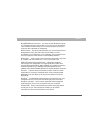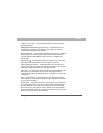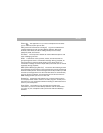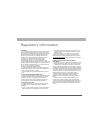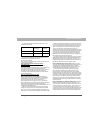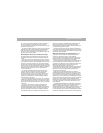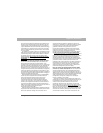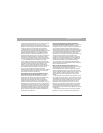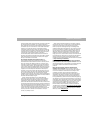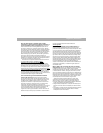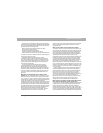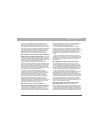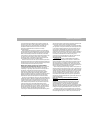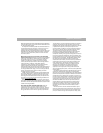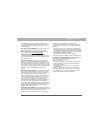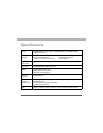
Using Your Treo 700P Smartphone 292
Regulatory information
antenna and the power of each transmitter. Typically, 21 channels
per antenna sector are available. For a typical cell site using
sector antennas, each of the three transmitting antennas could be
connected to up to 21 transmitters for a total of 63 transmitters.
However, it is unlikely that all of the transmitters would be
transmitting at the same time. When omni-directional antennas
are used, a cellular base station could theoretically use up to 96
transmitters, but this would be very unusual, and, once again, it
is unlikely that all transmitters would be in operation
simultaneously. Base stations used for PCS communications
generally require fewer transmitters than those used for cellular
radio transmissions, since PCS carriers usually have a higher
density of base station antenna sites.
Are wireless telephone base stations safe? The
electromagnetic RF signals transmitted from base station
antennas stations travel toward the horizon in relatively narrow
paths. For example, the radiation pattern for an antenna array
mounted on a tower can be likened to a thin pancake centered
around the antenna system. The individual pattern for a single
array of sector antennas is wedge-shaped, like a piece of pie. As
with all forms of electromagnetic energy, the power decreases
rapidly as one moves away from the antenna. Therefore, RF
exposure on the ground is much less than exposure very close
to the antenna and in the path of the transmitted radio signal. In
fact, ground-level exposure from such antennas is typically
thousands of times less than the exposure levels recommended
as safe by expert organizations. So exposure to nearby residents
would be well within safety margins.
Cellular and PCS base stations in the United States are
required to comply with limits for exposure recommended by
expert organizations and endorsed by government agencies
responsible for health and safety. Measurements made near
cellular and PCS base station antennas mounted on towers have
confirmed that ground-level exposures are typically thousands of
times less than the exposure limits adopted by the FCC. In fact, in
order to be exposed to levels at or near the FCC limits for cellular
or PCS frequencies an individual would essentially have to
remain in the main transmitted radio signal (at the height of the
antenna) and within a few feet from the antenna. This is, of
course, very unlikely to occur.
When cellular and PCS antennas are mounted on rooftops,
RF levels on that roof or on others near by would probably be
greater than those typically encountered on the ground.
However, exposure levels approaching or exceeding safety
guidelines should be encountered only very close to or directly
in front of the antennas. In addition, for sector-type antennas,
typically used for such rooftop base stations, RF levels to the
side and in back of these antennas are insignificant. General
guidelines on antenna installations and circumstances that
might give rise to a concern about a facility's conformance with
FCC regulations can be found in A Local Government Official's
Guide to Transmitting Antenna RF Emission Safety: Rules,
Procedures, and Practical Guidance. This Guide can be accessed
at: http://www.fcc.gov/oet/rfsafety
.
Who regulates exposure to radiation from microwave
ovens, television sets and computer monitors? The Food
and Drug Administration is responsible for protecting the public
from harmful radiation emissions from these consumer
products.
Does the FCC routinely monitor radiofrequency
radiation from antennas? The FCC does not have the
resources or the personnel to routinely monitor the emissions
for all the thousands of transmitters that are subject to FCC
jurisdiction. However, the FCC does have measurement
instrumentation for evaluating RF levels in areas that may be
accessible to the public or to workers. If there is evidence for
potential non-compliance with FCC exposure guidelines for a
FCC-regulated facility, staff from the FCC's Office of Engineering
and Technology or the FCC Enforcement Bureau can conduct an
investigation, and, if appropriate, perform actual measurements.
Circumstances that could give rise to a concern about a facility's
conformance with FCC regulations can be found in A Local
Government Official's Guide to Transmitting Antenna RF
Emission Safety: Rules, Procedures, and Practical Guidance.
This Guide can be accessed at: http://www.fcc.gov/oet/rfsafety
.
Potential exposure problems should be brought to the FCC's
attention by contacting the FCC RF Safety Program at: 202-418-
2464 or by email: rfsafety@fcc.gov
.



